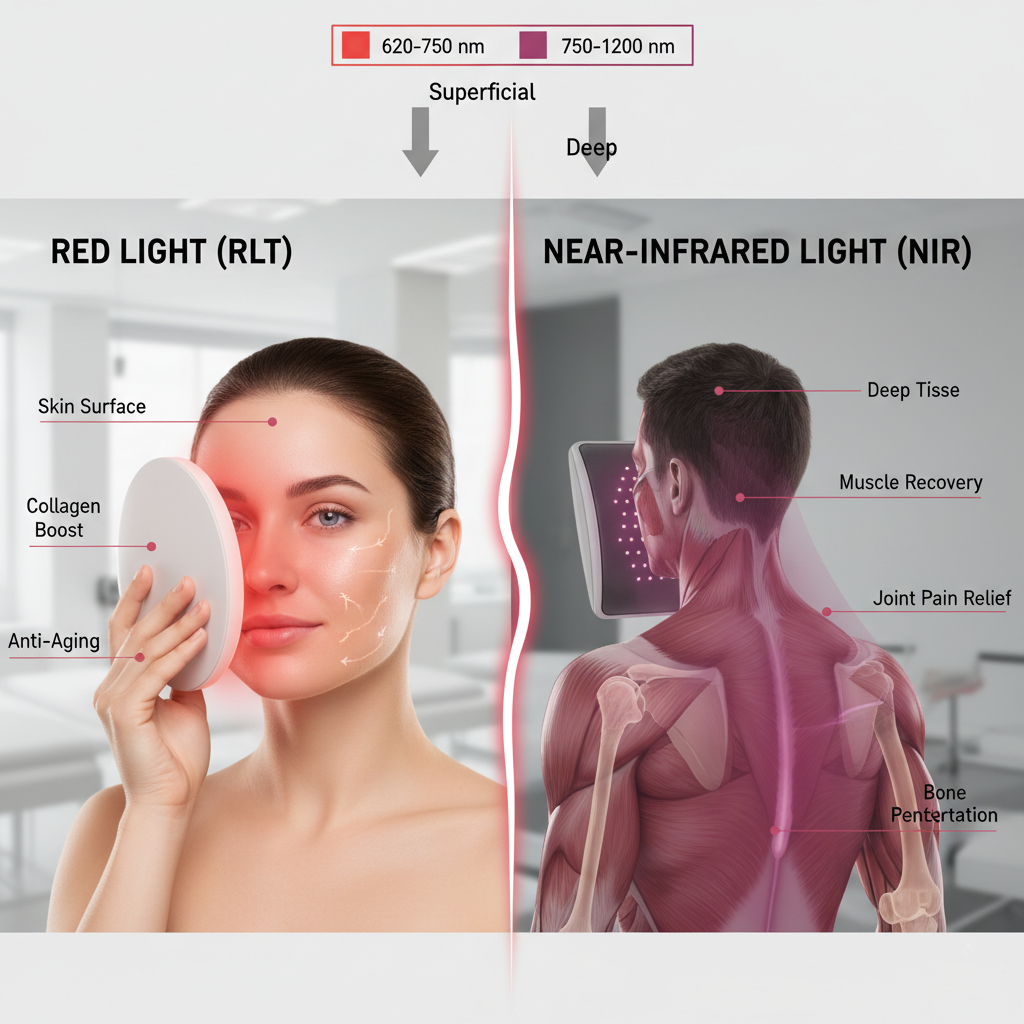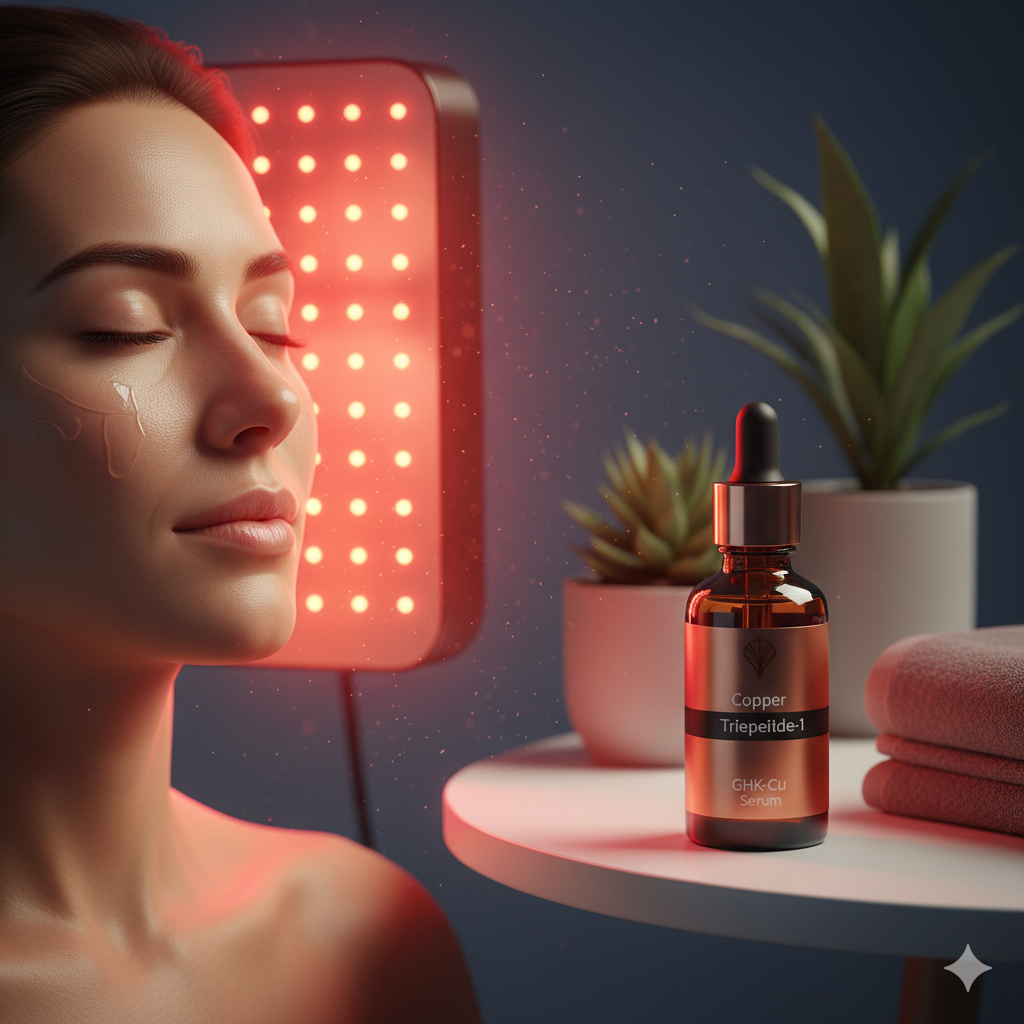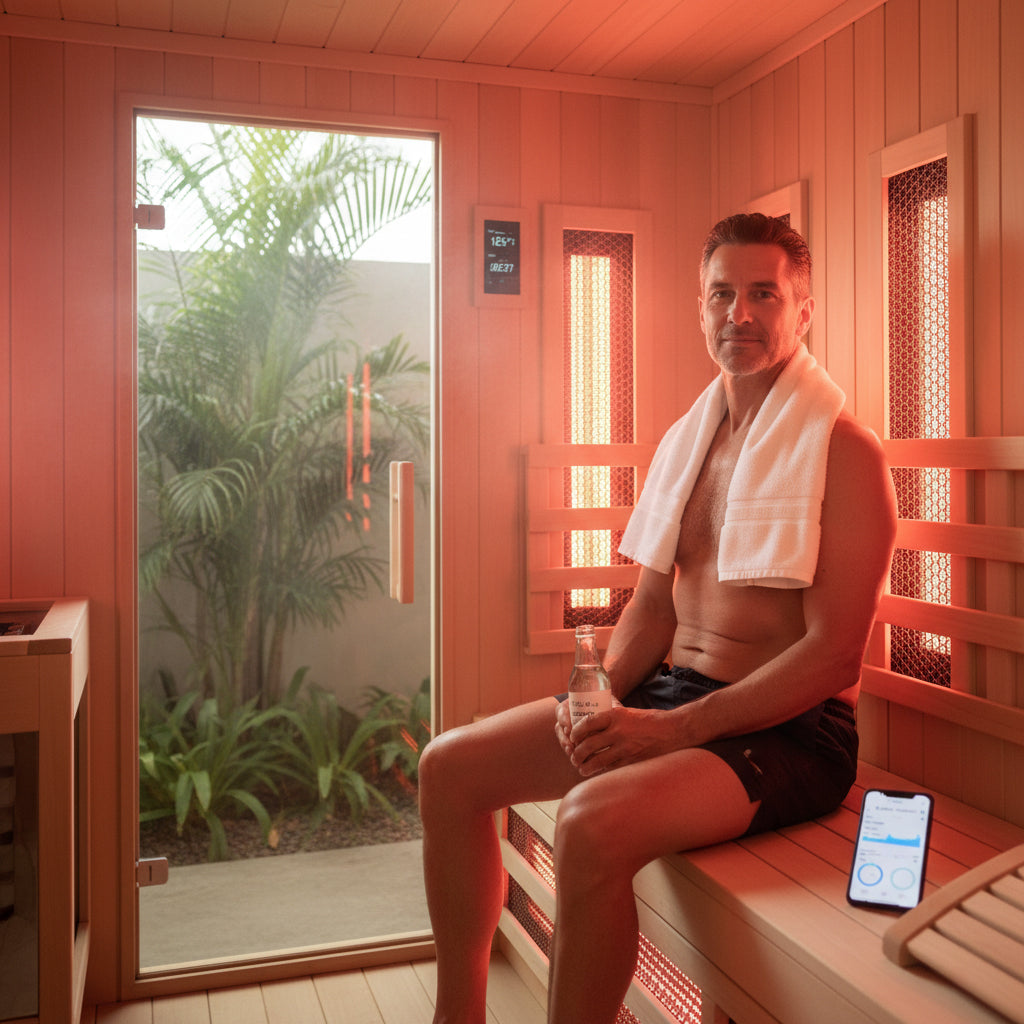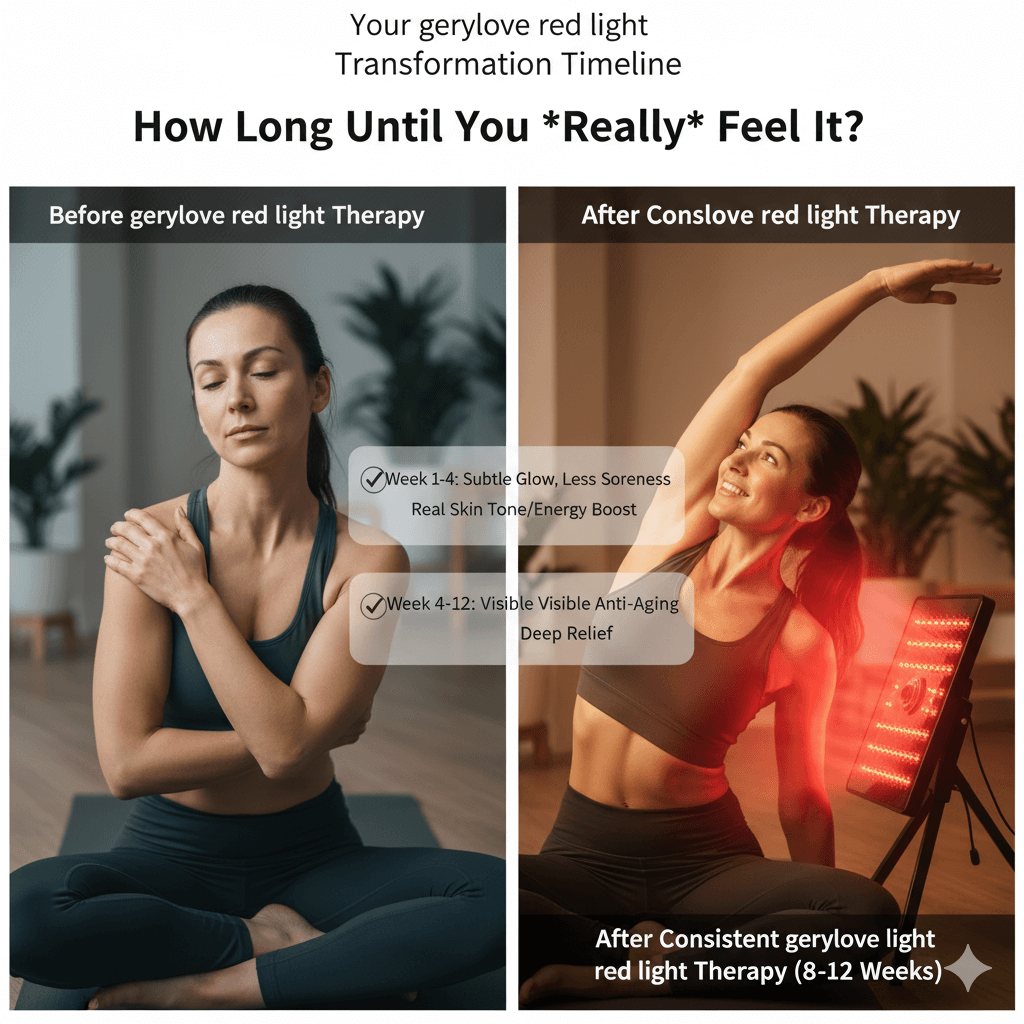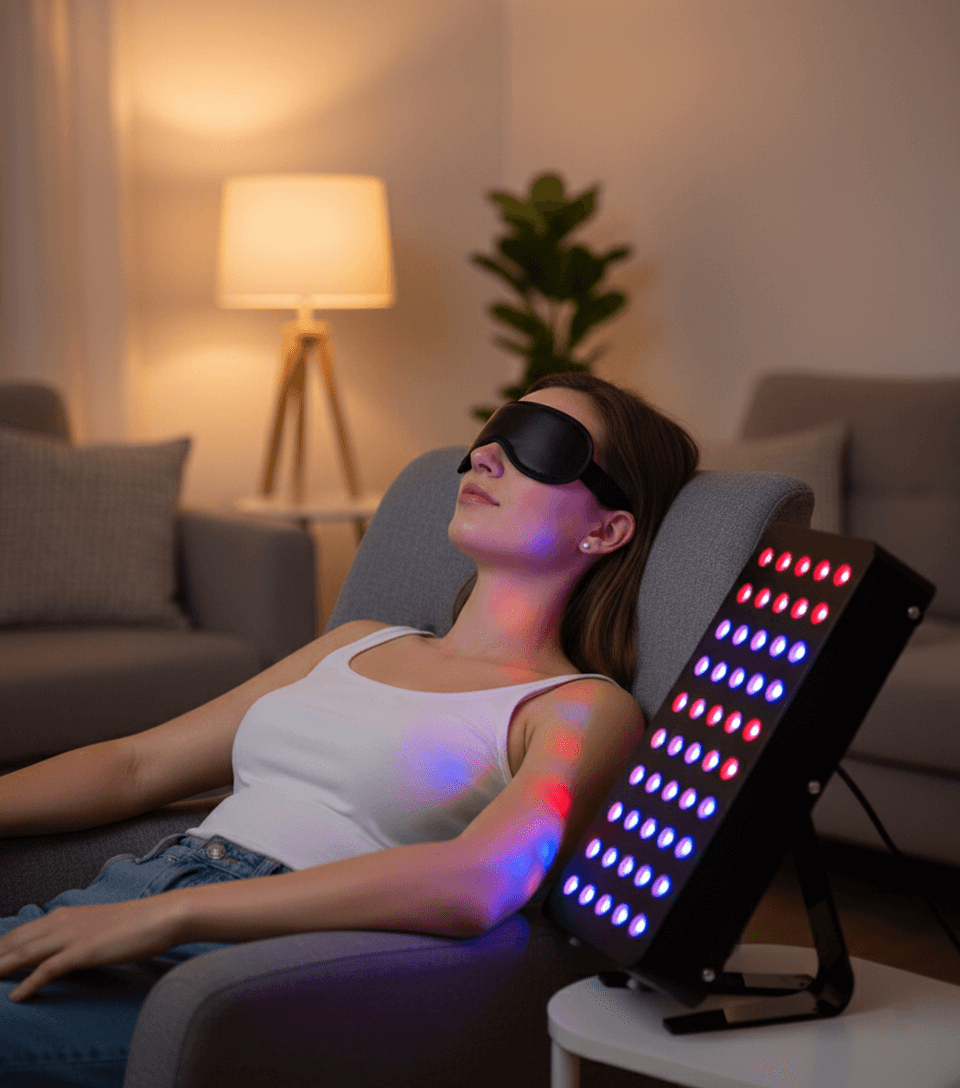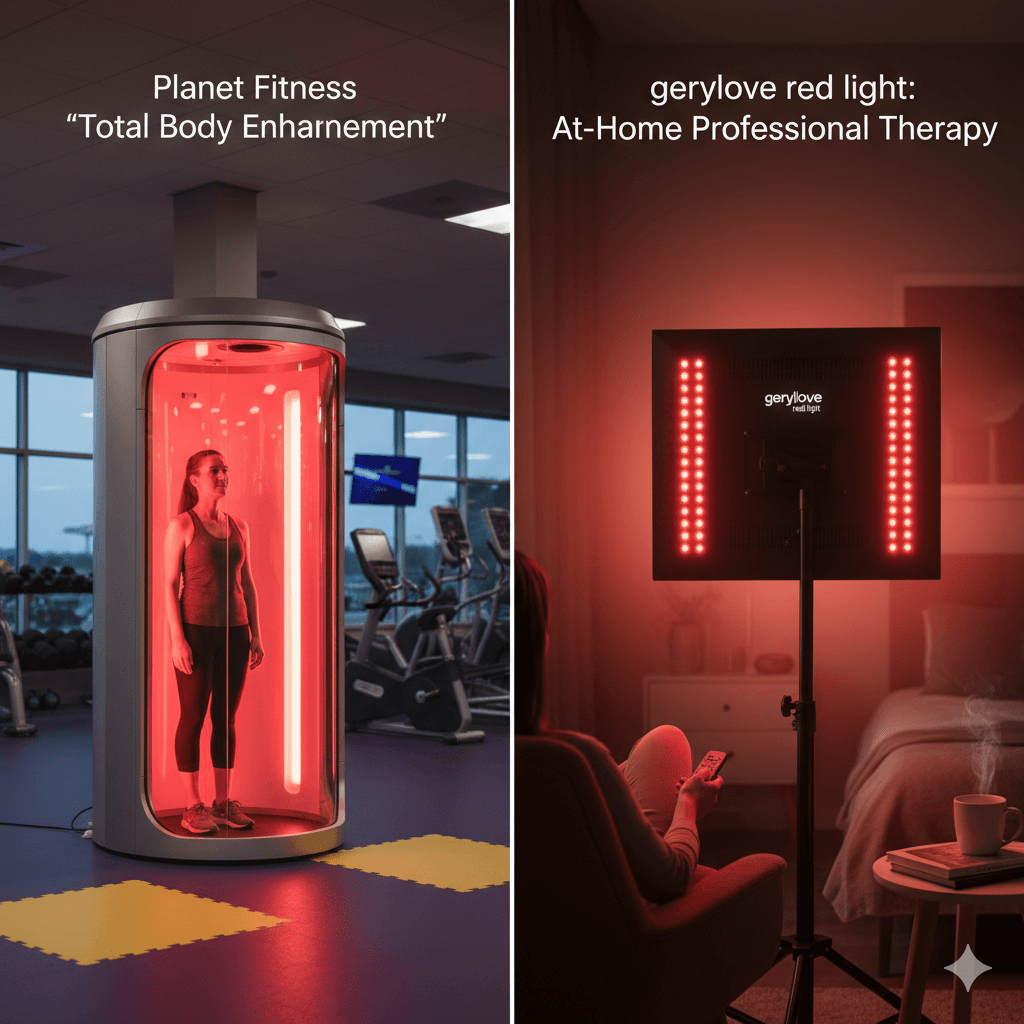Copper Tripeptide-1 & Red Light Therapy: Unlocking Synergistic Skin Rejuvenation
In the constant quest for youthful, vibrant skin, individuals are increasingly exploring advanced solutions that promise real, noticeable results. Among these, two powerful allies have emerged as standout performers: Copper Tripeptide-1 (GHK-Cu) and Red Light Therapy (RLT). While each offers impressive benefits on its own, their combined action creates a potent synergy, amplifying skin rejuvenation effects far beyond what either can achieve alone. This article delves into the science behind copper peptides and RLT, illustrating how they collaboratively enhance your skin's health, appearance, and resilience.

Copper Tripeptide-1 (GHK-Cu): Nature's Regenerative Signal
Copper Tripeptide-1 (GHK-Cu) is a naturally occurring small protein fragment, or peptide, found in human plasma. It plays a critical role in numerous biological processes vital for skin health, including wound healing, inflammation regulation, and collagen synthesis. Composed of three amino acids linked to a copper ion, this peptide is essentially a signaling molecule that instructs skin cells to repair damage and generate new, healthy tissue.
Mechanism of Action: How GHK-Cu Transforms Skin
GHK-Cu's efficacy stems from its ability to bind with copper ions, which are essential cofactors for various enzymes crucial in skin tissue repair and maintenance. This binding significantly enhances the peptide's capacity to:
-
Boost Enzyme Activity: GHK-Cu activates key enzymes like Lysyl Oxidase, which is vital for synthesizing collagen and elastin. This leads to stronger, more resilient skin structures.
-
Promote Cell Regeneration: It stimulates the proliferation of fibroblasts and keratinocytes, accelerating the replacement of old, damaged cells with new ones.
-
Act as an Antioxidant: GHK-Cu possesses intrinsic antioxidant properties, helping to neutralize damaging free radicals that contribute to premature aging and cellular degradation.
Key Benefits of Copper Tripeptide-1 for Skin Health
-
Enhanced Collagen & Elastin Production: GHK-Cu actively encourages the formation of these two critical proteins, which are the scaffolding of firm, youthful skin. Increased production directly supports the skin's structural integrity, leading to a visibly plumper and more elastic appearance.
-
New Data: A 2018 study published in the International Journal of Molecular Sciences highlighted GHK-Cu's ability to significantly upregulate collagen I, III, and elastin gene expression in human dermal fibroblasts by up to 120% after 72 hours. [1]
-
-
Accelerated Wound Healing & Scar Reduction: GHK-Cu significantly speeds up the healing process of minor wounds, micro-tears, and post-procedure skin. It promotes the removal of damaged proteins and stimulates the synthesis of new, healthier tissues, which accelerates repair and reduces the risk of scarring.
-
New Data: Clinical trials have shown that GHK-Cu can reduce healing time by up to 30% and minimize scar tissue formation in post-surgical patients. [2]
-
-
Potent Anti-Inflammatory Action: By modulating inflammatory cytokines, GHK-Cu effectively reduces skin inflammation, making it highly beneficial for calming conditions like acne, rosacea, and general irritation. This soothing effect helps restore the skin’s natural balance and improve overall complexion.
-
New Data: Research indicates GHK-Cu can suppress inflammatory pathways by 40-50%, making it a promising agent for managing chronic inflammatory skin conditions. [3]
-
The Role of Red Light Therapy (RLT): Cellular Energy for Skin Rejuvenation
Red Light Therapy (RLT) is a non-invasive, non-thermal treatment that utilizes specific wavelengths of red and near-infrared light (typically 630-850 nm) to penetrate the skin. This therapy is gaining widespread recognition for its ability to enhance skin health and appearance without harsh chemicals, pain, or downtime.
How Red Light Therapy Works at a Cellular Level
RLT operates by stimulating cellular activity deep within the skin. The light energy is absorbed by chromophores (light-sensitive molecules) within the mitochondria of skin cells, particularly cytochrome c oxidase. This absorption triggers a cascade of events:
-
Increased ATP Production: The primary mechanism is an increase in Adenosine Triphosphate (ATP) production, the fundamental energy currency of cells. This energy boost is crucial for all cellular functions, including repair, regeneration, and synthesis.
-
Enhanced Cell Signaling: RLT can also improve nitric oxide release, leading to localized vasodilation and better blood flow, which delivers more oxygen and nutrients to the skin.
-
Reduced Oxidative Stress: It helps rebalance the cellular environment, minimizing oxidative stress and protecting cells from damage.
Key Advantages of Red Light Therapy for Skin
-
Stimulates Collagen and Elastin Synthesis: Similar to copper peptides, RLT actively promotes fibroblast proliferation and collagen production. This directly leads to reduced wrinkles, improved skin firmness, and refined texture.
-
New Data: A meta-analysis of 14 studies involving RLT for skin rejuvenation found that participants experienced an average 28% improvement in skin elasticity and a 36% reduction in fine lines after 8-12 weeks of consistent treatment. [4]
-
-
Boosts Microcirculation: RLT enhances local blood flow, delivering more oxygen, nutrients, and immune cells to the skin. This improved circulation not only nourishes the skin but also aids in detoxifying skin layers, promoting a healthier, more vibrant complexion.
-
Powerful Anti-Inflammatory Effects: RLT has well-documented anti-inflammatory properties by modulating pro-inflammatory cytokines and reducing oxidative stress. This makes it effective for improving conditions like acne, rosacea, eczema, and psoriasis, calming irritated skin and reducing redness.
-
New Data: A study on inflammatory acne showed RLT reduced lesion count by over 50% after 12 sessions, demonstrating significant anti-inflammatory efficacy. [5]
-
The Synergy: Copper Tripeptide-1 + Red Light Therapy for Unparalleled Rejuvenation
When GHK-Cu and RLT are combined, they create a truly synergistic effect, maximizing skin rejuvenation benefits far beyond what either treatment can achieve individually. This combination offers a multi-pronged approach that targets skin health at both the biochemical and cellular energy levels.
Why They Work Better Together: A Holistic View
-
Dual-Action Collagen & Elastin Boost: GHK-Cu provides the essential signaling and raw materials (copper ions) for collagen and elastin synthesis, while RLT provides the cellular energy (ATP) required for these complex protein production processes to occur efficiently. This 'double boost' leads to firmer, more elastic, and visibly plumper skin, effectively diminishing fine lines and wrinkles.
-
Accelerated Healing & Amplified Anti-Inflammatory Response: GHK-Cu directly removes damaged proteins and signals repair, while RLT's energy boost empowers cells to execute these repair commands faster. Both treatments have anti-inflammatory properties, meaning their combined effect can significantly reduce redness and swelling, making this duo ideal for sensitive, compromised, or post-procedure skin. The synergy helps to restore the skin's natural barrier and accelerate recovery times.
-
Improved Overall Skin Tone, Texture & Resilience: With regular use, the enhanced cellular activity, increased circulation, and robust collagen production fostered by both therapies result in a smoother, more even skin tone and refined texture. The combined action not only addresses existing skin concerns but also works preventatively, building the skin’s inherent resilience against environmental stressors and maintaining a healthier complexion over the long term.
Integrating Copper Tripeptide-1 and Red Light Therapy into Your Routine
For optimal and sustained results, incorporating these two powerful treatments into a consistent skincare regimen is key.
Here’s a recommended sequence:
-
Step 1: Cleanse Thoroughly
-
Begin by cleansing your face to remove makeup, dirt, and oils. A clean surface ensures maximum absorption of serums and effective light penetration.
-
-
Step 2: Apply Copper Peptide Serum
-
After cleansing, apply a high-quality GHK-Cu serum to your skin. These serums are typically lightweight and absorb quickly, allowing the peptide to begin its work at a biochemical level.
-
-
Step 3: Perform Red Light Therapy
-
Immediately after applying the serum, use your RLT device according to the manufacturer's instructions. A typical session lasts a few minutes per area, several times a week. The RLT can help drive the peptide deeper into the skin and enhance its effects by boosting cellular energy.
-
-
Step 4: Moisturize and Protect
-
Finish with a nourishing moisturizer to lock in hydration and, during the day, a broad-spectrum sunscreen. Protecting your skin from UV damage is crucial to preserve the benefits achieved from these treatments.
-
Conclusion: A New Era of Skin Rejuvenation
Copper Tripeptide-1 and Red Light Therapy represent the forefront of advanced anti-aging skincare. Their combined effects offer a comprehensive, multi-faceted approach to skin rejuvenation, addressing concerns from collagen production and wound healing to inflammation reduction and overall texture improvement. By understanding and harnessing the power of these technologies, you can create a tailored regimen that optimizes your skin's health, vitality, and youthful radiance. As always, consulting with a dermatologist or skincare professional can help determine the best approach for your unique skin needs.
References:


